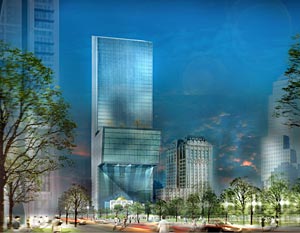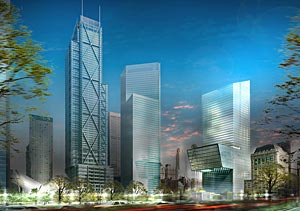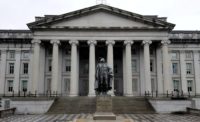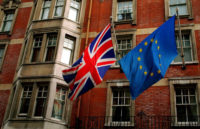Kohn Pedersen Fox (KPF) chairman Gene Kohn has confirmed that his team is designing a new headquarters for JPMorgan Chase’s investment bank at the World Trade Center site—a project that attracted considerable attention in June when the bank announced its intention to build in lower Manhattan—and stresses that despite an early PR setback, his design will satisfy project stakeholders as well as the public.

KPF prepared massing studies for WTC5, an office tower that will house JPMorgan Chase’s investment bank. It proposes to locate the bank’s trading floors in a volume that cantilevers over a small church and plaza, but critics complain the volume will cast too large a shadow over the site.

WTC5 would join a collection of other office skyscrapers along the eastern portion of Ground Zero.
Known as World Trade Center 5, the new building will replace the Deutsche Bank tower, which was heavily damaged during the attacks on September 11, 2001 and is now being dismantled. Kohn says that he began studying the site two or three years ago at the request of its landlord, the Port Authority of New York & New Jersey. WTC5 will occupy a footprint of 32,000 square feet, ceding 18,000 square feet to the St. Nicholas Church, which will be rebuilt after its complete destruction during the attacks.
Kohn says that he performed several massing studies to design a way of wedging large floor plates onto the small available footprint. “Obviously the site has a lot of limitations, and the Port Authority wanted to see if JPMorgan Chase would go for it,” he explains. Preliminary sketches won the bank’s confidence in KPF—but when New York’s governor, Eliot Spitzer, unveiled them at a June 14 press conference, observers soon began piling on criticisms.
The most prominent feature of KPF’s glass-walled, 743-foot-tall tower is a cantilever located several stories up that is designed to provide space for the bank’s trading floors. While most levels of the building comprise 32,000 square feet, the seven floors in this section encompass as much as 56,000 square feet apiece. Critics worry that they might cast a sizeable shadow over a new public plaza at the World Trade Center site. In a Bloomberg news service item, James S. Russell described WTC5 as “a spectacularly amateurish performance by a firm capable of corporate design at the highest level.”
Even Spitzer’s comments seemed, at best, a lukewarm endorsement. “I’m not an aesthete so I refuse to pass judgment on this or others,” he said at the June press conference, “but it will [create] an all-weather park where it’s possible to play ball in the rain.”
The hubbub over KPF’s early sketches prompted the Lower Manhattan Development Corporation, which shepherds financing for Ground Zero, to defend the design in an e-mail news update on July 11. “(The cantilever) will cast a minimal shadow on Lower Manhattan, particularly compared to its taller neighbors,” the group said. These possible neighbors, which have yet to attract tenants, include office skyscrapers designed by Norman Foster, Richard Rogers, and Fumihiko Maki.
Contested designs at the World Trade Center site are nothing new, of course. For his part, Kohn hopes that KPF’s design will gain favor as it is refined; a final scheme will be ready this winter. He adds that the bank, which officially appointed KPF to design the tower on July 17, wants a beloved downtown landmark. The proposed WTC5 cantilever, Kohn says, “acts like a great porch, all glass and very light.”




